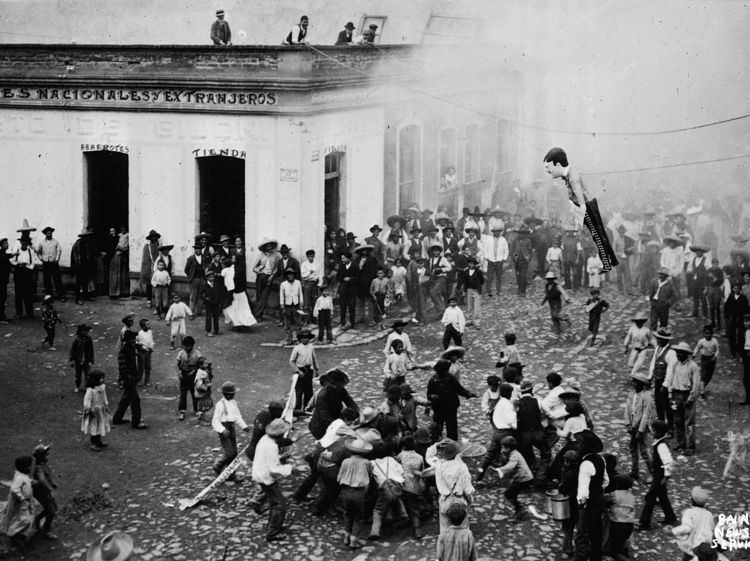 | ||
The burning of Judas is an Easter-time ritual in many Orthodox and Catholic Christian communities, where an effigy of Judas Iscariot is burned. Other related mistreatment of Judas effigies include hanging, flogging, and exploding with fireworks. Anthropologists generalize these types of activities as "scapegoating rituals". A similar ritual would be the hanging in effigy of Haman and his ten sons during Purim.
Contents
Though not an official part of the Easter liturgical cycle, the custom is typically a part of the reenactment of the story of the Passion that is practiced by the faithful during Easter. Customs vary, but the effigy of Judas is typically hanged (reenacting Matthew 27:5) on Good Friday, then burned on the night of Easter Sunday.
In many parts of Latin America this practice occurs on the eve of the new year as a symbol of ridding one's self of evil and beginning a new year in spiritual purity. Some communities observe this ritual using various effigies, including the biblical Judas (who betrayed Jesus). This custom, during which the effigy is burned on a stake, is invariably called "Quema del Año Viejo" meaning literally "the burning of the old year."
Practice
The burning of Judas was once widely practiced across Europe, and is still practiced in parts of Greece, Mexico, Brazil, Portugal, Spain, Uruguay, Venezuela, Cyprus where it is called 'lambratzia', the Philippines, and elsewhere.
Judas burnings also took place in the district of Dingle, in Liverpool, England, in the early 20th Century, until it was banned by the authorities. The burning of Judas is not traditional to England, although a very similar custom of burning Catholic rebel Guy Fawkes in effigy exists.
Allegations of antisemitism
The practice was once cited in the United States State Department's Religious Freedom Report for Greece. The report incorrectly referred to the custom as the "burning of the Jew", whereas in Greece the term always used is "burning of Judas". In response, Archbishop Christodoulos, then head of the Greek Orthodox Church, denied such allegations, stating that this practice refers to the image of "Judas the traitor" and not Jews in general.
In Latin America, despite the controversial nature of anti-Semitism associated with the "burning of the Jew" (one of the custom's many monikers), although the practice does exist in the above stated form it is not regarded as an act of hostility towards the Jewish nation or ethnicity but is simply representative of "evil", thus not differing in any way from the other effigies listed.
